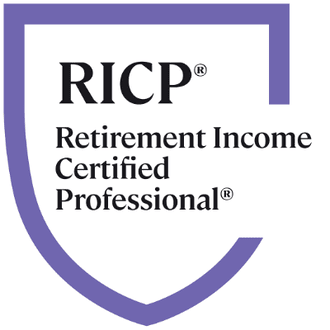
The Lazy Portfolio: Simplified Investing for Public Service Professionals and Educators
As public service professionals and educators, your time is precious. Balancing rewarding work, personal commitments and financial planning can be challenging. When it comes to investing, many of you might feel overwhelmed by the complexities of the financial markets. But I'm here to let you know that investing does not have to be complicated. Enter the lazy portfolio: a straightforward, low-maintenance investment strategy designed to help you achieve your long-term financial goals with minimal effort.
What is a Lazy Portfolio?
A lazy portfolio is a collection of investments that require minimal management. It typically consists of a few (or even one) diversified, low-cost index funds or ETFs (exchange-traded funds). You can also get index mutual funds that will also do the job. The objective is to create a portfolio that can perform well over the long term without frequent adjustments or constant monitoring.
Key Characteristics:
- Simplicity: Easy to set up and understand.
- Diversification: Spreads investments across various asset classes to minimize risk.
- Low Costs: Utilizes low-cost index mutual funds or ETFs to keep fees low.
- Passive Management: Once established, it requires minimal ongoing management.
Who Invented the Lazy Portfolio?
The concept of the lazy portfolio is often credited to Paul B. Farrell, a former columnist for MarketWatch and author of several investment books. Farrell popularized the idea of simple, diversified, low-cost portfolios that require minimal maintenance. His advocacy for lazy portfolios was influenced by the principles of the late John C. Bogle, the founder of Vanguard Group, who championed low-cost index fund investing. Bogle’s work laid the groundwork for passive investing strategies, emphasizing the importance of low fees, broad diversification, and long-term perspectives.
Popular Lazy Portfolio Models
Two of my favorite lazy portfolios are shown below. Well-known lazy portfolio models can be tailored to meet your needs, so it's key to balance risk and return effectively. Before you implement the portfolio, it's very important to speak to a financial advisor.
1. The Three-Fund Portfolio
Popularized by the Bogleheads community, this portfolio includes three funds:
- Total Stock Market Index Fund: Covers virtually all publicly traded companies in the U.S.
- Total International Stock Index Fund: Provides exposure to international markets.
- Total Bond Market Index Fund: Offers stability and income through bonds.
These low-cost index or mutual funds can be purchased from major brokerages such as Fidelity, Schwab, and Vanguard. Check out the the Bogleheads.org wiki for where to find these funds at the various brokerages.
2. Target Date Index Funds
You can also be even lazier and do a target date index fund. Be careful here. Look for the index funds. There are many target date funds, and a lot of them are not index funds but are actively managed. Target date index funds are an excellent option for those who prefer a more hands-off approach. These funds automatically adjust their asset allocation based on your expected retirement date. As you get closer to retirement, the fund gradually shifts from higher-risk investments (like stocks) to lower-risk investments (like bonds). You can check out the Bogleheads.org website for where to find target-date index funds. The target date, such as 2050, should match when you anticipate retiring.
Advantages of Target Date Index Funds:
- Automatic Rebalancing: The fund adjusts its holdings to become more conservative as the target date approaches.
- Simplicity: You only need to choose the fund that corresponds to your expected retirement year.
- Diversification: These funds are inherently diversified, holding a mix of stocks and bonds.
Bogleheads: The Community Behind the Lazy Portfolio
The Bogleheads community is an enthusiastic and knowledgeable group of investors who follow the principles of John C. Bogle, the founder of Vanguard Group. Named after Bogle, this community advocates for simple, low-cost investing strategies, primarily using index funds.
Key Principles of Bogleheads:
- Live Below Your Means: Spend less than you earn and invest the difference.
- Invest Early and Often: Start investing as soon as possible to take advantage of compound interest.
- Never Bear Too Much or Too Little Risk: Adjust your asset allocation to balance risk and return based on your personal circumstances.
- Diversify: Spread your investments across various asset classes to minimize risk.
- Use Low-Cost Index Funds: Keep fees low to maximize returns.
- Stay the Course: Stick to your investment plan, even during market downturns.
The Bogleheads community offers extensive resources, including forums, wikis, and books, to help investors implement these principles effectively. They are strong proponents of the lazy portfolio, often recommending it as an ideal strategy for long-term financial success. A Google search will reveal a vast amount of resources on low-cost index funds and the Bogleheads' approach. Always look for the word "index" in the mutual fund or ETF.
Why Choose a Lazy Portfolio?
1. Ease of Use
Setting up a lazy portfolio requires minimal financial knowledge. Most brokers offer the necessary index funds and ETFs, and the allocation can be easily adjusted to suit individual risk tolerances and investment horizons.
2. Cost Efficiency
Lazy portfolios focus on low-cost index funds or ETFs, which have lower expense ratios compared to actively managed funds. This can significantly enhance returns over the long term due to the compounding effect of lower fees.
3. Diversification
By including a mix of asset classes, lazy portfolios spread risk across various sectors and geographies. This helps to protect against market volatility and downturns in specific areas. Diversification is the free lunch of investing, so you need to take advantage of this.
4. Time-Saving
Since these portfolios are designed to be set-and-forget, they require little ongoing maintenance. This is perfect for professionals who don’t have the time or inclination to monitor the markets constantly.
5. Proven Performance
Research shows that passive investing strategies, like those employed in lazy portfolios, often outperform actively managed funds over the long term. The consistent returns of index funds make them a reliable choice for long-term growth.
How to Build Your Own Lazy Portfolio
- Determine Your Asset Allocation: Decide how much to allocate to stocks, bonds, and other assets based on your risk tolerance and investment goals.
- Choose Your Funds: Select low-cost index funds or ETFs that match your desired asset allocation, or choose a target date index fund that aligns with your retirement timeline.
- Set Up Automatic Contributions: Regularly invest a set amount into your portfolio to take advantage of dollar-cost averaging.
- Rebalance Periodically: If you are not using a target date fund, adjust your portfolio once or twice a year to maintain your target allocation.
Conclusion
As public service professionals and educators, you dedicate your lives to serving others and shaping the future. I presented two options of the three fund portfolio or the ultimate in laziness if the target date index fund. Your investment strategy should be as efficient and effective as the work you do. The lazy portfolio is an excellent choice for those seeking a straightforward, low-cost, and effective way to grow their wealth over time. Focusing on simplicity, diversification, and passive management offers a practical solution for achieving financial goals with minimal effort. Whether you are a seasoned investor looking to simplify your strategy or a beginner ready to start your investment journey, the lazy portfolio provides a reliable path to long-term financial success. Contact me using the button below if I can help work on your lazy portfolio.
*This content is developed from sources believed to be providing accurate information. The information provided is not written or intended as tax or legal advice and may not be relied on to avoid Federal Government tax penalties. Individuals are encouraged to seek advice from their own tax or legal counsel. Individuals involved in the estate planning process should work with an estate planning team, including their own personal legal or tax counsel. Neither the information presented nor any opinion expressed constitutes a representation of a specific investment or the purchase or sale of any securities. Asset allocation and diversification do not ensure a profit or protect against loss in declining markets.





